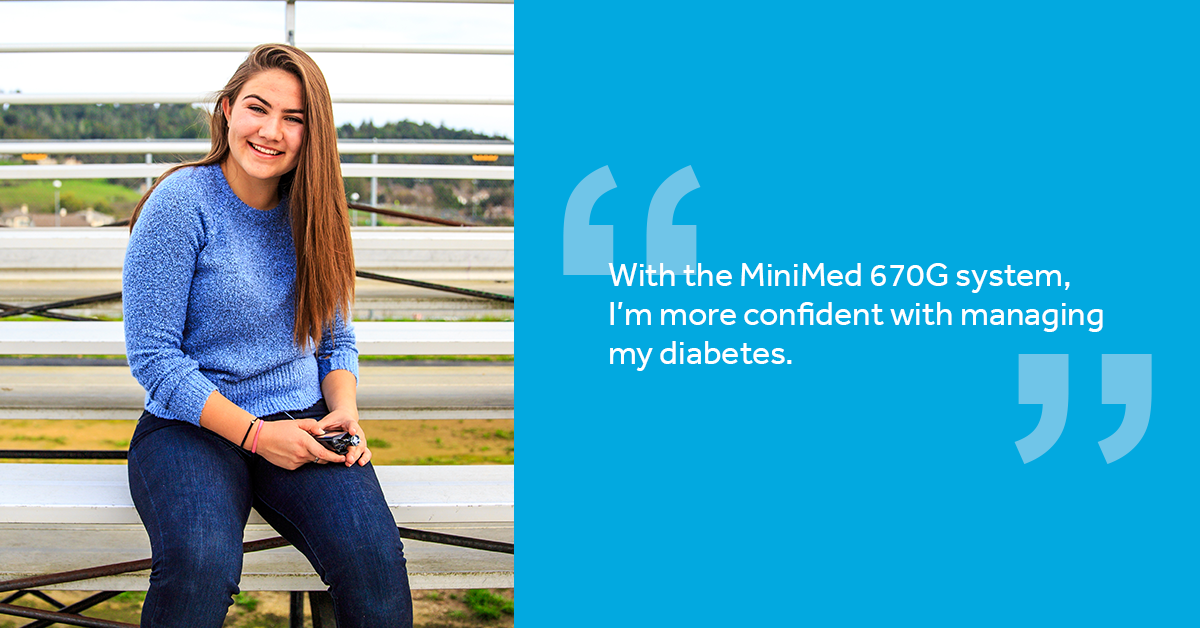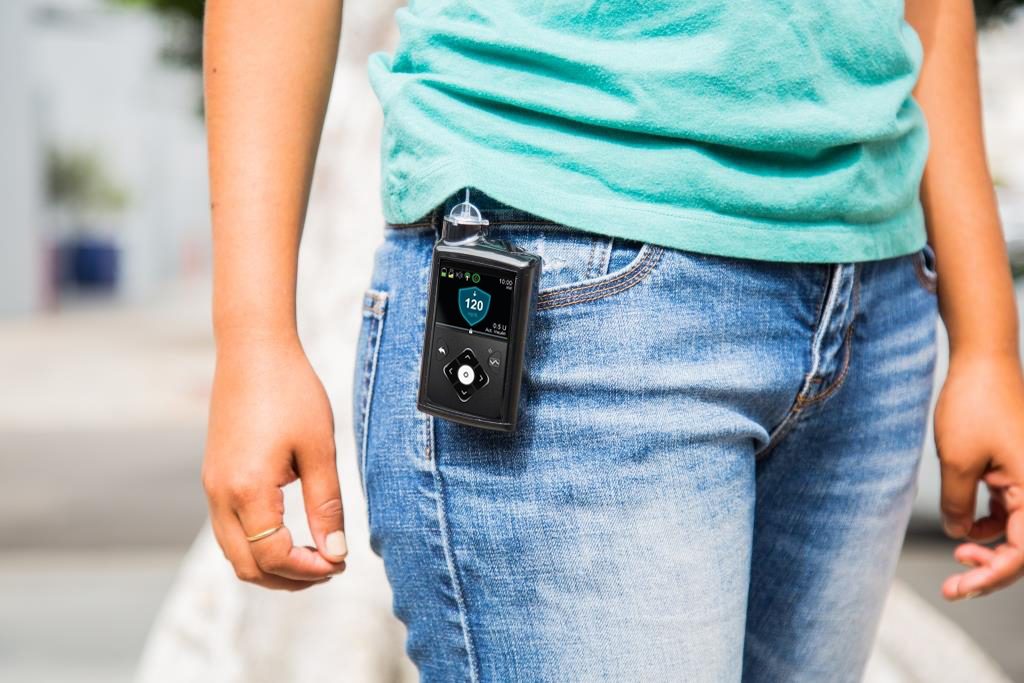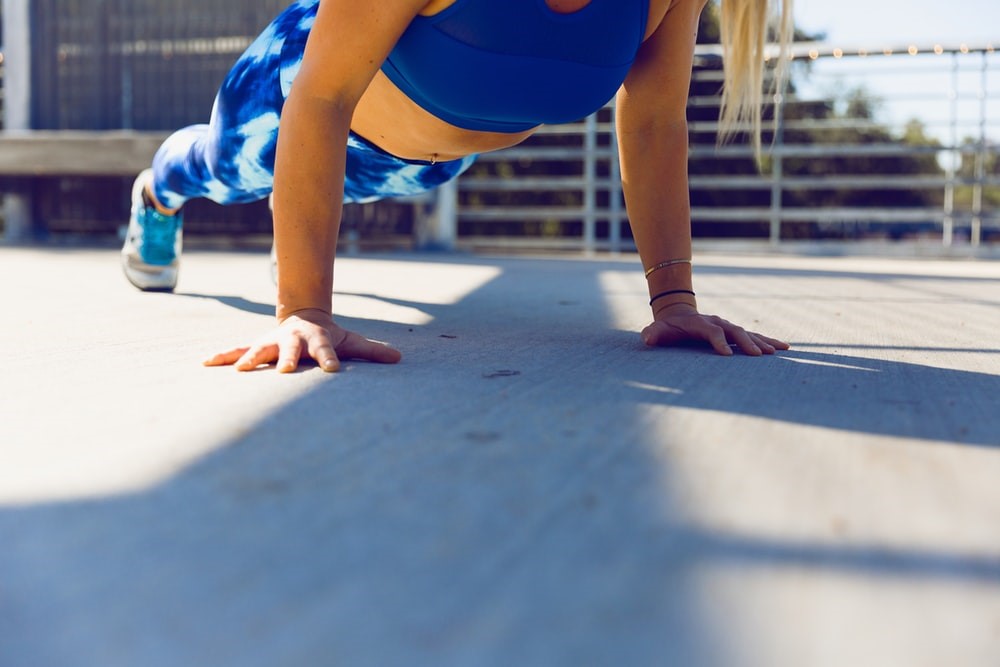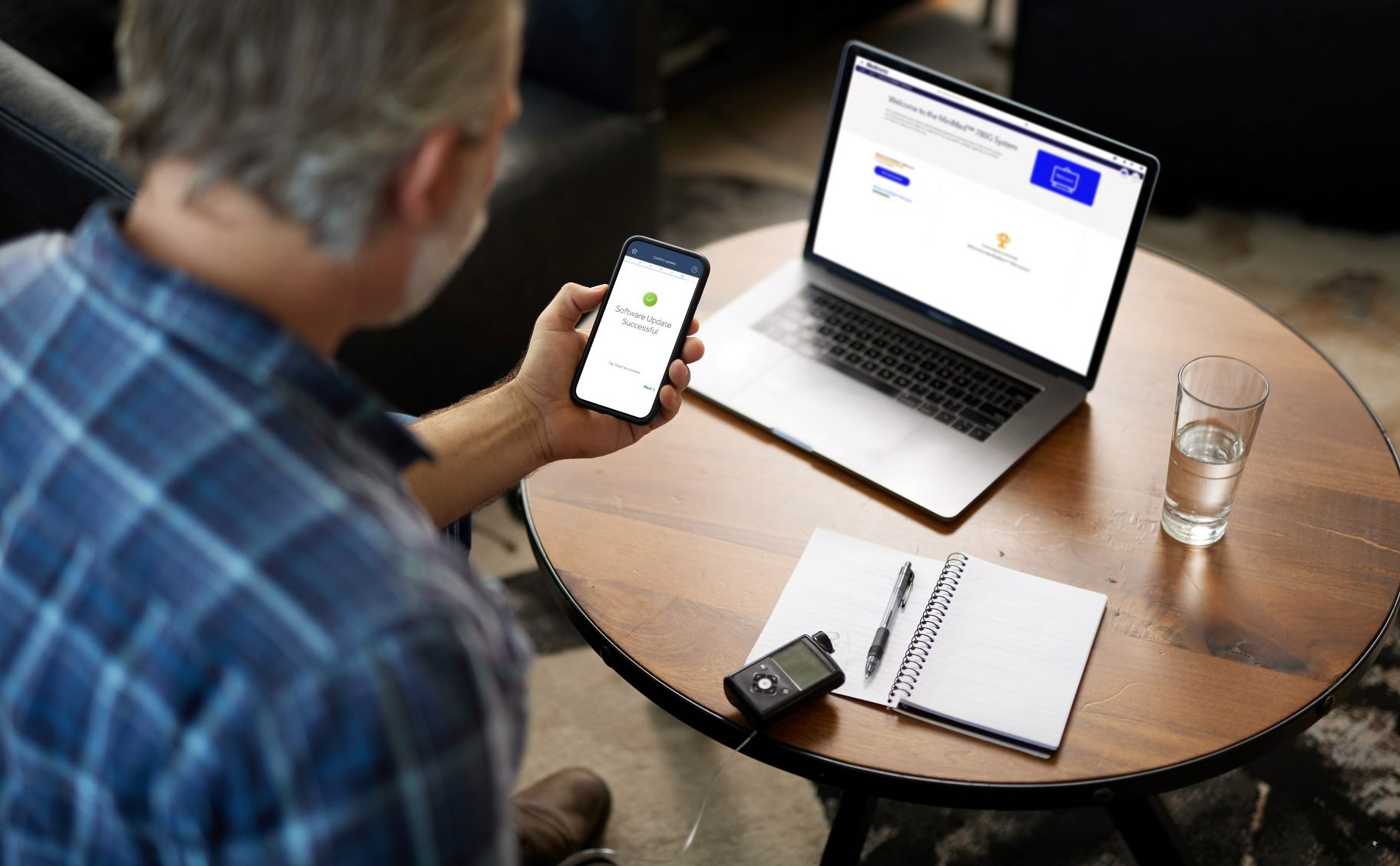Nicky answers your questions about the MiniMed™ 670G system

Meet our MiniMedTM 670G system video star, Nicky Williams. We think she’s pretty amazing.
I’ve met a lot of inspiring people with diabetes. But when I was lucky enough to meet Nicky, this 17-year-old who plays soccer, hikes mountains, rides horses, excels in school and is a working through an ambitious “1000 places to see” list, I was wowed. Talk about someone not letting diabetes hold her back.
She’s also been using the MiniMedTM 670G system for more than a year as a clinical trial participant and kindly volunteered to let us share her story in photos, video and more. We know you’re all curious to hear what the new system is like in the real world, so we recently asked our social community what you’d like to ask Nicky. Today, she’s answering your questions!

What's your favorite part of the new system and does the system work well with your daily life?
Diabetes is hard for anyone, but as a busy teenager who just wants to go have fun with friends it can be extremely hard to take care of both. However because my MiniMedTM 670G system is capable of helping me take care of diabetes, it allows me to focus on being a teenager rather than a diabetic.
My favorite part of the system is how confident the pump, especially the Auto Mode feature, makes me in my diabetes. It takes care of most of my blood sugar fluctuations without me having to even think about it. And I know that if anything even starts to go wrong with my sensor glucose then it will notify me so that I will have plenty of time to deal with it. Because of this it has definitely become an essential part of my busy life. I have tried to go a few days without the system, and have noticed that I am much more anxious throughout the day because I do not have that extra help from the system and have noticed that my blood sugars are much worse on those days.
 How does the pump operate during a sensor warm up, and how does the system work if something goes wrong with your sensor? Is there a default operating system is place for these times?
How does the pump operate during a sensor warm up, and how does the system work if something goes wrong with your sensor? Is there a default operating system is place for these times?
For me it generally takes a few hours to do the entire process of charging my transmitter and putting on a new sensor so that it can warm up. Because of this, I am generally not in Auto Mode and I am running on the default operating system (Manual Mode) for most of the warm up. The default operating system for the MiniMedTM 670G system is the normal operating systems of most pumps with just the use of constant basal and regular boluses. It is always available and is what the pump reverts to when it is not in the hybrid closed-loop. During this time, as long as all my settings are still accurate, then everything operates well for me.
About the bad sensor, it is not common that I get a bad sensor as long as I wear the tape, which is generally pretty strong. However the few times that I have messed up the sensor’s tape tab the MiniMedTM 670G system stopped getting information from the sensor. I knew something was wrong with it and have been able to quickly address the issue. Editor’s Note: In Manual Mode, you can use the system as an integrated pump and sensor like Nicky does, with Suspend on low or with Suspend before low.
Is the new sensor truly accurate? When it is in Auto Mode is it truly auto for basal or does it tell you to go stick your finger then it makes changes?
I have found the sensor to be extremely accurate and is generally within about 20% of my actual blood sugar (I think last time I compared the sensor glucose to my tested bg it was like 6 mg/dL off!). I would say the only time it is kind of far off is when my blood sugar is radically changing so the sensor isn’t able to keep up with it, but it is still only about 30 mg/dL off. Also, when you are in Auto Mode it will take care of small highs or lows but it is not capable of taking care of quick or large changes in my sensor glucose levels, like ones above 200 mg/dL.
Because of this, it is recommended I test by fingerstick and correct when my numbers are high or treat if low. The pump may move you out of Auto Mode and back into the normal basal mode if the sensor doesn’t feel like it is accurate. To get back into Auto Mode I have to prick my finger and calibrate with that blood sugar and possibly follow some other instructions depending on what the pump wants. The system must be calibrated with a blood sugar check every 12 hours or else it will transfer me out of Auto Mode.
Does the 120 mg/dL target make you high? I feel like it should be lower.
The 120 mg/dL target generally works for me; however I have always had the 120 mg/dL target so I personally do not know if a different one would be better or worse. I have however found that there are many other settings I can change if I am running high which can help bring my glucose levels down. For example, if I am running high in the morning then I might change my morning Insulin to Carb ratio to be more aggressive to help keep my blood sugar lower.
Have you been able to sleep better on the system? My teenage son sleeps through the alarms of his current pump!
My numbers have definitely been better and more even throughout the night. I generally coast around the 100-150 range while in Auto Mode on the MiniMedTM 670G system. The pump is able to take care of most of the rises and dips of my diabetes overnight without me having to do anything. However while it does take care of many of the fluctuations it will generally try to wake me up if I am too far out of range, in which case it changes out of Auto Mode and into just the normal basal rate. To go along with this I also sleep through most of the alarms, unless I am either really low or really high, in which case my body generally naturally wakes me up. Overall though, I found that if I am not woken by any alarms, it definitely helps me to get a better night’s sleep and feel more rested in the morning. 
Side note: The alarms are loud, even on vibrate, so if you are sleeping over with a friend you might want to warn them just in case it wakes them up.
How does a system like this manage high carb meals, like a bowl of spaghetti?
In my experience, if I pre-bolus for big carb meals then it handles the meal pretty well and my numbers stay relatively flat. However, if I post-meal bolus, which is what I usually do because I am not good at pre-bolusing, then I generally end up spiking up into the high 200’s for about 2 hours until the insulin is able to catch up. Once the insulin catches up the pump is able bring me back to a good blood sugar range and keep me there even if there are any little post meal fluctuations like a small low.
How do you handle exercise while in Auto Mode?
 In activities that I am able to keep my pump on for, like jogs, riding my horse, and hiking, I have found the temp target to be extremely helpful. (The
In activities that I am able to keep my pump on for, like jogs, riding my horse, and hiking, I have found the temp target to be extremely helpful. (The  Temp Target allows me to change the 120 mg/dL target to 150 mg/dL for a few hours). I didn’t use the Temp Target for about the first 6 months of using the pump, but since I discovered it, I have fallen in love with it! I can’t even count the amount of times it has helped my number stay at 150 mg/dL when I know that without it I would have gone low. However, there are still times when my blood sugar has dropped during exercise. In many of those cases I have been able to start treating the low before it got serious because I was able to watch the arrows on the screen and see which direction my glucose was going.
Temp Target allows me to change the 120 mg/dL target to 150 mg/dL for a few hours). I didn’t use the Temp Target for about the first 6 months of using the pump, but since I discovered it, I have fallen in love with it! I can’t even count the amount of times it has helped my number stay at 150 mg/dL when I know that without it I would have gone low. However, there are still times when my blood sugar has dropped during exercise. In many of those cases I have been able to start treating the low before it got serious because I was able to watch the arrows on the screen and see which direction my glucose was going.
I started the MiniMedTM 630G three weeks ago and slated to migrate to the MiniMedTM 670G in the next few months. My sugars run high when I travel. Has the MiniMedTM 670G simplified your adjustments when traveling?
I have found that I too run high when I travel and have definitely noticed that the Auto Mode feature helps to make compensating for that easier. It takes care of the most of the general highs for me throughout the day and keeps me more vigilant on them. It’s able to get my numbers down to the 120 mg/dL range overnight and keeps them there throughout the night. However, I also generally need to be a little more generous with my bolusing for the first few days. I think, though that the majority of that issue stems from my diet being more carb heavy while I am traveling.
Editor’s note: want to hear more? Listen to our Facebook Live with Nicky here.



